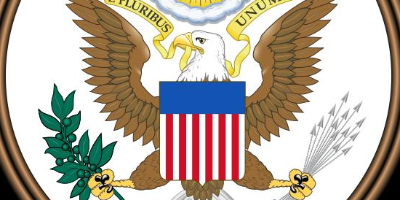Homestead Strike (jul 1, 1892 – nov 20, 1892)
Description:
A strike by industrial workers in Homestead, PA by the Amalgamated Association of Iron and Steel Workers (the AA) against Carnegie Steel. Upset at the increasing power of the AA, Carnegie Steel President Henry Clay Frick promptly fired all union workers. In response, over 6000 workers participated in the strike, which involved surrounding a steel mill and barring access to it by establishing large picket lines all throughout the town and hijacking several boats. On July 4, Frick enlisted the help of Sheriff William H. McCleary to convince the strikers to allow access to the plant. The strikers refused, and Frick had a large fence built around the mill.On July 6, Frick hired 300 private policemen from the Pinkerton Detective Agency (known as Pinkertons) armed with rifles to forcefully disperse the strikers. The Pinkertons moved in at 4 a.m. and exchanged fire with the strikers. A cannon was set up opposite the steel mill and was fired at the strikers' barges. The Pinkertons tried to land again at 8:00 a.m., but many of them were refusing to continue due to the loss of life. By the afternoon, the strikers began trying to burn the Pinkertons' barges by lighting timber and a railroad flatcar full of oil on fire and hurling them at the boats. Dynamite was also thrown, but both proved ineffective.
McCleary was encouraged by Governor Robert E. Pattison to deploy his men to break up the fighting. By 4:00 p.m. more than 5000 men had arrived at the Homestead plant. However, by this point the strikers and Pinkertons were calling for a truce. Upon arrival at the mill, several of the Pinkertons were attacked by strikers, and their barges were burned. The Pinkertons continued to Pittsburgh, harassed by the townsfolk along the way. When they arrived, officials declared that they would released, not charged with murder.
Pattison, who had been elected by a Carnegie political machine, desired to control the town, which largely supported the AA. He had the militia organized, who arrived on July 12, commanded by Major General George R. Snowden. Over 4000 soldiers surrounded the mill, while an additional 2000 were placed on a hill overlooking the town. Under the watch of the militia, strikers were unable to prevent Frick bringing in new employees to work the mill. The new workers were multiracial, though, and soon conflict arose in the mill as a result. Meanwhile, a group of strikers tried to storm the plant but were wounded by the militia. On July 18, the town was placed under martial law. Five days later, Alexander Berkman and Emma Goldman, two anarchists with no association to either Carnegie or the union, attempted to assassinate Frick. Berkman failed as was given 22 years in prison. On August 12, Frick announced that the mill's production was at full capacity, with over 1500 new workers. Realizing the strike had failed, the union agreed to go back to work on November 20.
The strike broke the AA's power, with membership down from 24,000 in 1891 to a third of that four years later. It was the third most violent dispute in US labor history.
Casualties:
7 strikers dead
11 strikers injured
3 Pinkertons dead
12 Pinkertons injured
Added to timeline:
Date:
jul 1, 1892
nov 20, 1892
~ 4 months and 22 days
